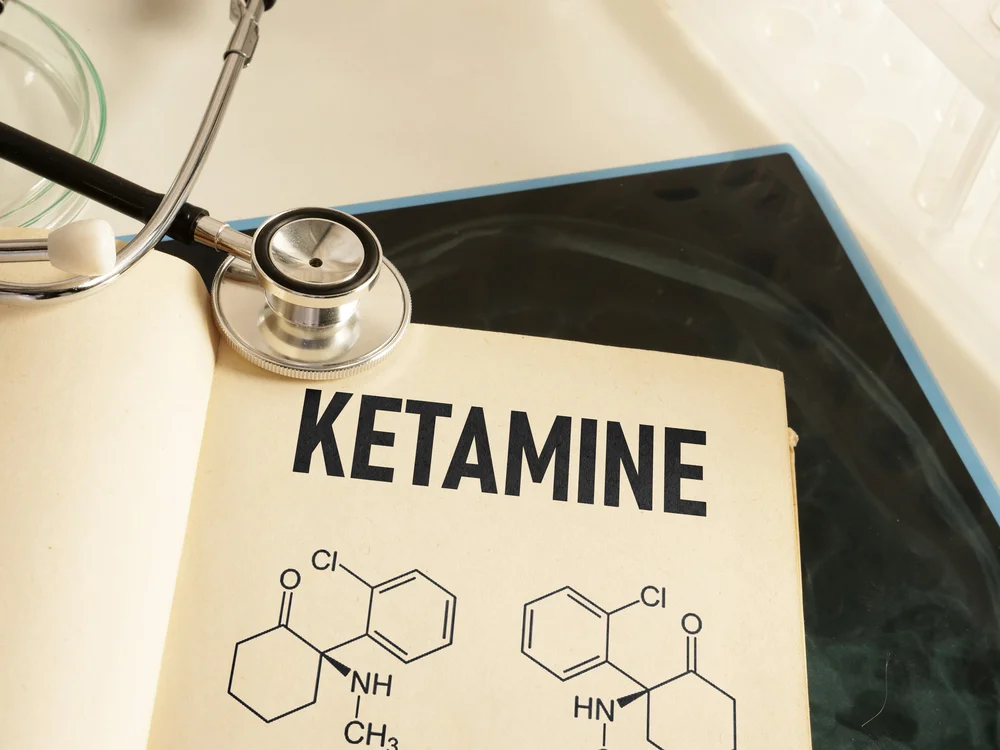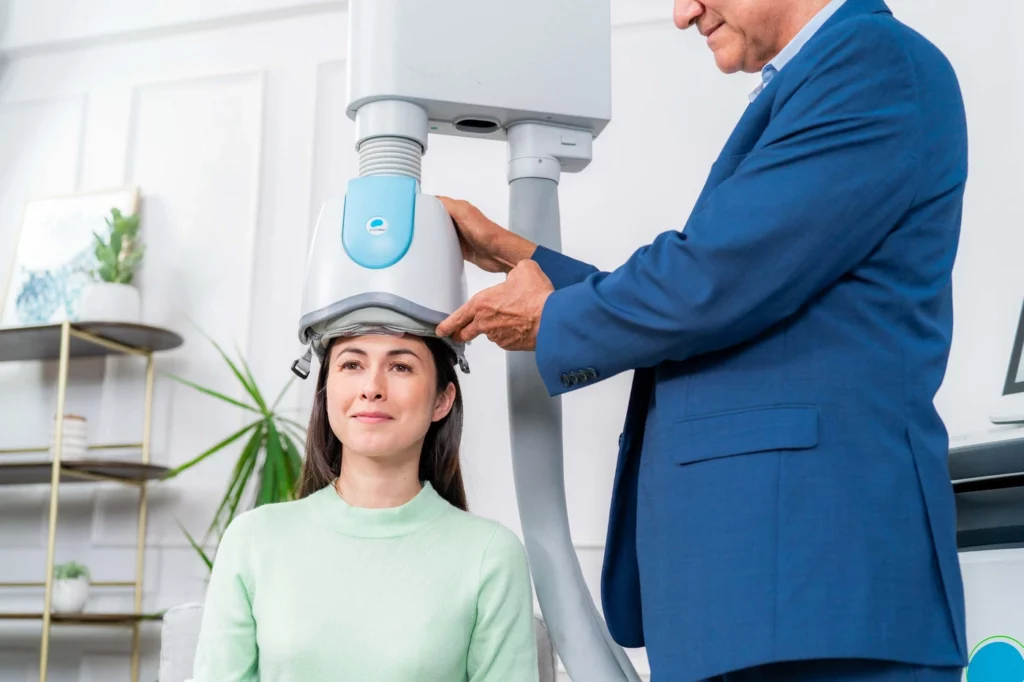Major depressive disorder has a 17% lifetime incidence and affects over 18 million people. In nearly 50% of those who are diagnosed with major depressive disorder, pharmacotherapy involving antidepressant medications is effective at managing symptoms. However, for the remaining 50% for whom antidepressants are not effective, an average of 25% of them struggle with treatment-resistant depression.
Treatment-resistant depression (TRD) is a condition where individuals with a major depressive disorder no longer respond to treatment. This type of depression has a significantly detrimental impact on patients as they are no longer responsive to antidepressant medications and find little relief from their symptoms. For this reason, it is imperative to explore various treatment options for those who do not respond to conventional antidepressants.
Challenges in Managing TRD
Finding treatment-resistant depression treatment is important for patients who have been diagnosed with a major depressive disorder and have tried two or more prior antidepressants with no positive outcome. These individuals are much less likely to recover using medication alone, but alternative TRD treatment can offer a solution.
Those who have tried antidepressants and gotten no relief can struggle with severe emotional and social implications. It can lead to disheartening and inaccurate beliefs that there are no treatment options available and that they have to live with their depression. This can make it difficult to maintain good relationships or socialize with others. It can also lead to secondary and tertiary mental and physical health effects.

There are several reasons why some people may not respond to traditional treatments, including the source of their depression symptoms, the severity of their symptoms, and how effectively traditional medication can modulate certain poorly functioning areas of the brain or provide cognitive relief.
Comprehensive Overview of Treatment-Resistant Depression Treatment Options
So, what are the main options for those who do not respond to traditional depression medication? There are pharmacological treatments that are designed specifically for treatment-resistant depression, psychological therapies, neuromodulation therapies, and alternative and emerging therapies.
This article will explore all of those.
#1: Pharmacological Treatments
Novel treatment options for TRD center on augmenting pharmacological interventions by either switching antidepressants from one type of antidepressant to another or trying newer pharmacological treatments such as Ketamine or esketamine.
How it works
Ketamine or esketamine are derivatives of PCP or angel dust. Originally, this was used as a surgical anesthetic, but since the 1990s, it has been investigated as a form of depression treatment. Most recently, it has been approved specifically for use in major depressive disorder with suicidal ideations or treatment-resistant depression because of the way it interacts with neurotransmitters.
During a session, you will receive a nasal spray or injection. Both of these are highly regulated by the FDA, which means you have to sign documents indicating your understanding of all the rules relating to the treatment, and you’ll have to go to your clinic regularly to receive the treatment while also staying for several hours to be observed after the fact for any negative side effects.
If you receive an injection, a doctor will administer the injection when you go to the clinic. If you are using a nasal spray, a doctor will tell you how to use it and watch you as you administer the nasal spray.
Most people undergo a handful of sessions but the total amount is based on your individual needs. It is a simple outpatient procedure but the majority of the time required is for your observation.
Ketamine helps to regrow glutamate receptors.
Glutamate receptors are located at the end of nerve cells and control nerve cell function and communication.
Depression can cause these synapses to die and the glutamate receptors to no longer function the way they should. This means your brain doesn’t communicate as it is intended to. This can cause damage to areas like the hippocampus, which impedes mood, memory, and other circuitry functions.
New pharmacological treatments like Ketamine can help regrow these synapses and offer relief for people who struggle with treatment-resistant depression.

Spravato or Ketamine offers fast relief from symptoms that can happen within a matter of a few treatments, meaning that it is ideal for anyone who is struggling with suicidal ideation.
Note: There is a caveat here. The use of Ketamine is heavily regulated, and individuals who receive this type of treatment-resistant depression treatment must also continue to use an antidepressant or antipsychotic. If you have tried an antidepressant before and it no longer works, you can consider a different antidepressant as part of your ketamine regimen. With the help of your healthcare professionals and mental health professionals you can monitor the efficacy of both.
How long it lasts
Certain pharmacological treatments like Ketamine or esketamine (Spravato) have been approved by the FDA since 2019 which means limited information is available on the longevity of the results.
However, limited studies indicate that continuous treatment maintains the response or remission for adults up to 20 weeks after their initial exposure. This means individuals who see a reduction in their symptoms will maintain that reduction and individuals who receive remission will maintain that remission.
Efficacy
- Between 35.6% and 46.1% of those with depression go into remission after using Spravato.
- 70% of those who use spravato have at least a 50% reduction in depression symptoms.
- Studies indicate that 62% of patients see better social functioning while on spravato, 53% of patients report better quality of life, 41% have better work performance, 30% are able to meet basic needs, and 34% see a general improvement in life.
Side effects
Research indicates that dissociation and sedation are two of the main side effects. For this reason, individuals must remain under supervision for several hours and have someone else drive them.
Things like blood pressure have to be measured before and after the pharmacological treatment is administered.
Those with a history of certain conditions like substance abuse and anyone who is pregnant, nursing, or may become pregnant should avoid this option.
Adverse effects are very common, including:
- Dizziness
- Nausea
- Vertigo
- Hypoesthesia
- Anxiety
- High blood pressure
However, many of these go away after the first 90 minutes.
#2: Psychological Therapies
Cognitive behavioral therapy is one of the most effective psychotherapy options for all types of depression, including treatment-resistant depression.
How it works
Psychotherapy, like cognitive behavioral therapy or dialectical behavioral therapy, is incredibly important in managing long-term depression. They are not designed to offer quick relief like Ketamine does but instead to offer long-term coping mechanisms, stress reduction techniques, and other lifestyle strategies that can change your perspective and your relationship to your depression and depression symptoms.
You will meet with a therapist in individual or group settings, during which time you will talk about your symptoms and daily experiences, often with a lot of homework and opportunities for real-time practice.
Often, especially for people with treatment-resistant depression, symptoms are made worse by personally maintained beliefs or automatic thoughts such as “there will never be a solution” or “these feelings will never go away.”
Cognitive behavioral therapy and dialectical behavioral therapy can help you explore what automatic negative thoughts are creating unnecessary depression, anxiety, and stress and offer a way to not only recognize them but alleviate them.
How long it lasts
These effects can last at least six months or one year. The likelihood of long-term benefits from cognitive behavioral therapy has a lot to do with how dedicated you are to using the techniques learned on a regular basis and what other treatment options you are using in conjunction with cognitive behavioral therapy or dialectical behavioral therapy.
Efficacy
- Comprehensive literature reviews have confirmed that the response and remission rates are statistically significant in those who utilize cognitive behavioral therapy.
- Other research has concluded that pharmacological interventions used in conjunction with cognitive behavioral therapy show a significant decrease in depressive symptoms for those with treatment-resistant depression. In fact, participating in cognitive behavioral therapy or dialectical behavioral therapy can increase the efficacy of pharmacological interventions.

#3: Neuromodulation Techniques
If you need help for treatment-resistant depression, one of the things you might consider is neuromodulation techniques. These are techniques that stimulate the brain in different ways to modulate brain activity and provide better results than can be achieved with traditional pharmacological approaches.
Transcranial Magnetic Stimulation (TMS)

Transcranial magnetic stimulation is a non-invasive form of treatment that uses magnetic pulses to stimulate deeper regions of the brain associated with depression symptoms.
How it works
Transcranial magnetic stimulation places a device on the head and then, with controls from a technician, sends magnetic pulses into specific areas of the brain associated with symptoms of depression.
Treatment can include single-pulse transcranial magnetic stimulation, which focuses on localized brain function, or repetitive transcranial magnetic stimulation.
Options can be high frequency, more than 1 Hz, or low frequency, below 1Hz.
How long you receive TMS therapy is based on your needs but most people receive a total of 20 sessions, broken down into 20 or 30 minute sessions 5 days per week.
During a session your technicians will conduct brain mapping where they figure out where each part of your brain is located as the size, shape, and structure will vary from one patient to the next. Once they have your brain mapped, the remainder of your sessions will focus on targeting the magnetic pulses into areas most heavily associated with treatment resistant depression like the dorsolateral prefrontal cortex.
This helps to improve blood flow into underperforming blood vessels, circulation into areas of the brain, and improved communication by encouraging neural growth in areas that might be lapsed, a common cause of major depressive disorder.
How long it lasts
Many patients who undergo TMS as part of their treatment-resistant depression treatment receive relief from symptoms for an average of one year, although one-third of patients typically go into full remission.
For those who receive relief, ongoing TMS sessions may need to be an annual part of their care plan. However, TMS has no contraindications with other medication or treatment modalities, which means it is, for many, the best treatment for treatment-resistant depression because it can be combined with any other option.
Efficacy
- TMS has proven a beneficial alternative treatment for those with treatment-resistant depression. This type of holistic therapy for treatment-resistant depression has shown a significantly greater response rate for patients with a decrease in depression symptoms that is clinically significant and a likelihood of remission for up to 1/3 of individuals.
- Studies indicate that TMS treatment-resistant depression options are safe and well tolerated, approved by the FDA for those who have not responded to at least one antidepressant.
Side effects
There are next to no side effects associated with transcranial magnetic stimulation. It is a non-invasive technique, so it doesn’t require any anesthesia, nor are there driving restrictions. In fact, many people are able to schedule short, 20-minute sessions in the middle of their day and continue to resume activities immediately after.
It is a safe, outpatient procedure that is very well tolerated with no evidence of any complications. The most common adverse side effect is a headache or discomfort at the site of the electrodes which tends to go away after the first few sessions.

Electroconvulsive Therapy (ECT)
Therapy for treatment-resistant depression can also include electroconvulsive therapy. With these TRD treatment options, an electric stimulus is placed directly on the surface of the head.
How it works
The goal of electroconvulsive therapy is to induce a seizure by stimulating different frequencies for different lengths of time. On average:
The pulse width is between 0.3 and 1 msec- The frequency is between 20 and 120 Hz
- The duration is between 0.5 and 8 seconds
This gets adjusted based on seizure threshold, side effects, and individual patients. In particular, electroconvulsive therapy is among the top treatment-resistant depression options for those with:
- Severe psychotic depression
- Delirious mania
- Catatonia
Electroconvulsive therapy is typically administered between two and three times per week, and there are severe driving restrictions immediately following the treatment, which means individuals need someone else to drive them.
Anesthesia is involved in this process, which brings some mild risks as well. The number of sessions required is an average of 10, but this is based on individual needs.
How long it lasts
Long-term electroconvulsive therapy is not permanent, and patients generally go back on medication after they complete their course of electroconvulsive therapy. The cost can be high depending on the treatment, but it is widely available and may or may not be covered in part or in whole by your insurance provider.
Efficacy
- Studies have shown that electroconvulsive therapy offers rapid onset, which means it is a quick form of help for treatment-resistant depression.
- This type of seizure induction has clinical efficacy with between 60% and 90% acute response rates in patients with treatment-resistant depression.
Side effects
Among TRD treatment options, electroconvulsive therapy is associated with a wide range of side effects, including:
- Arrhythmias
- Nausea
- Muscle aches
- Headaches
These are often temporary side effects that tend to diminish with time. The most common effect is mild amnesia that lasts anywhere between a few minutes and a few days after treatment.
#4: Alternative and Emerging Treatments
Emerging treatments continue to research ways that individuals can find relief from their symptoms if they have treatment-resistant depression.
Some studies have confirmed that after eight weeks of treatment, those with treatment-resistant depression saw an improvement in their depression and anxiety symptoms thanks to acupuncture.
Acupuncture has been found to modulate the corticostriatal reward circuitry associated with major depressive disorder and treatment-resistant depression. There were significant increases in brain function and decreases in depression symptoms for those who participated in eight weeks of acupuncture in other studies as well.
Ongoing research and experimental treatments are continuing to look into alternative therapies like mindfulness. Mindfulness-based treatment after just eight weeks has been shown to successfully teach people to change their relationship to depressive feelings by doing things like:
- Decreasing rumination
- Enhancing self-compassion
- Increasing acceptance
- Decreasing avoidance
These TRD treatment options are particularly useful when used in conjunction with some of the items listed above, like TMS or pharmacological interventions, because pharmacological interventions or neuromodulation can change specific aspects of brain function and neural connectivity and for the rest of symptoms, mindfulness, and similar therapies like cognitive behavioral therapy can be used to change your relationship to your symptoms offering great relief.
Choosing the Right Treatment Path
If you struggle with treatment-resistant depression, finding treatment-resistant depression treatment options can seem impossible, but it isn’t. You can get help for treatment-resistant depression, but it’s up to you to assess the suitability of different treatments based on factors like:
- Your personal preference
- Previous treatment responses
- The severity of your condition
For example:
Mark is considering alternative treatments, neuromodulation, and pharmacological interventions. He is currently working with the therapist to find the best treatment for treatment-resistant depression, but he has a major depressive disorder, presenting with suicidal ideations.
For that reason, he receives personal recommendations to consider Spravato, the ketamine nasal spray or infusion, in order to get immediate relief from his symptoms as a way to manage the suicidal ideations.
Another part of his recommendation for treatment-resistant depression options is to undergo ECT and consider regular meditation and stress relief techniques that he has learned in his cognitive behavioral therapy sessions.
Now let’s look at another example:
Leah has a major depressive disorder, but it doesn’t present with suicidal ideations. She used to be on antidepressants, and they worked for several years, but after giving birth to her first child, she found that when she went back to antidepressants, they didn’t offer any relief.
Now, she is discussing her TRD treatment options with her qualified therapist, who recommends psychotherapy and transcranial magnetic stimulation.
You don’t have to find help for treatment-resistant depression on your own. It is important to regularly test any of these options, especially those that can be used in conjunction with one another, like one-time pharmacological interventions used in conjunction with ongoing Psychotherapy or neuromodulation. With professional help, you can get a personalized plan that offers the best treatment for treatment-resistant depression.
Be aware that it might take some time for you to find a good balance or to achieve the relief you are looking for. By continuing to adhere to your customized treatment plan and working with your team of professionals, you will be able to find relief now and in the future.

Conclusion
If you are looking into different treatment-resistant depression options, know that you have several areas of potential help and symptom relief. One of the first is the FDA-approved pharmacological interventions designed specifically for treatment-resistant depression, like Ketamine. The second is psychotherapy, which is like cognitive behavioral therapy.
Beyond that, there are neuromodulation techniques that can offer relief and remission for many people with treatment-resistant depression and alternative and emerging therapies.
If you are struggling, work toward an open dialogue with your healthcare providers and remain persistent about finding the best treatment for treatment-resistant depression. You don’t have to settle for living with symptoms unnecessarily. Know what your options are and advocate for them.